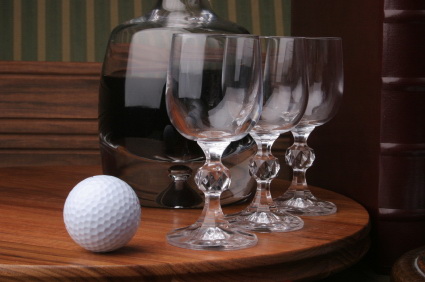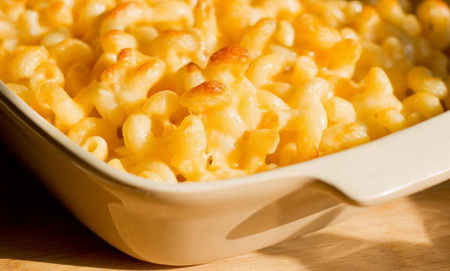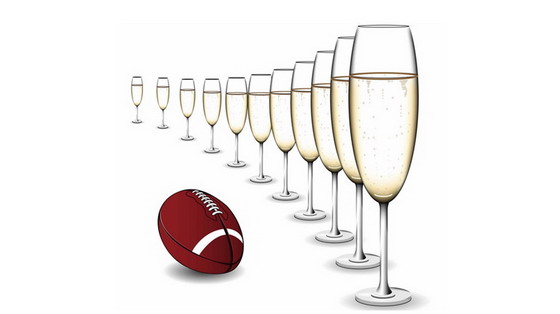This Facebook Live Video Wine Tasting above, we chat about pairing wine with Super Bowl snacks.
You can click on the arrow above to play the video.
We’re joined by guest winemaker, David Joeky of Casella Family Brands to help us get ready for the big game.
You’ll find our most recent live video wine tasting here:
We taste every Sunday evening at 6 pm eastern so add us to your calendar and grab a glass of wine.
Click on the buttons for “Share” and “Like” on the page above to get notified when we go live.
If you’d like to read 97 comments for this tasting, or make a comment yourself, visit:
https://www.facebook.com/natdecants/videos/10154411500734845/
See comments at the bottom of this page.
According to America’s National Chicken Council, US residents will eat 1.33 billion chicken wings on game day. Buffalo chicken wings and spicy chicken wings go well with off-dry Riesling or low-tannin Merlot.
Pulled pork sliders and meaty chili love juicy Zinfandel — so all-American too.
Bubbly is perfect for nachos, tacos, Doritos and potato chips.
Hot buttered popcorn cries out for a rich Chardonnay or Rhone white blend of Rousanne and Marsanne. How about taking it up a notch with truffled popcorn or truffle-inflected mac and cheese? Same wine works.
 As we head into Super Bowl 51 our minds turn to … game drinks and snacks! Why not pair #wine with your nibbles?
As we head into Super Bowl 51 our minds turn to … game drinks and snacks! Why not pair #wine with your nibbles?
Wine works with comfort foods like chili and mac and cheese, and it can also pair well with fast food, and yes, even chips, pretzels, and Skittles.
Wines to pair with Super Bowl snacks such spicy chili, hamburgers, potato chips, tacos, nachos and more …
We were joined by a special guest winemaker David Joeky from Australia’s Casella Family Brands, who make the popular, snack-friendly wines Young Brute and [yellow tail].
David Joeky has been involved in viticulture from an early age. Growing up tending vines on his family farm in Yenda, New South Wales, David knew that wine was his calling due to the passion that he had for all aspects of the viticultural craft.
 He moved from caring for the family vineyards, to growing and tending to vines and developing new fields for private vineyards. David then completed his studies in Bachelor of Applied Science (Wine Making) at Charles Sturt University Wagga Wagga, NSW.
He moved from caring for the family vineyards, to growing and tending to vines and developing new fields for private vineyards. David then completed his studies in Bachelor of Applied Science (Wine Making) at Charles Sturt University Wagga Wagga, NSW.
Since taking up a winemaker positio
n at Casella Family Brands in 2004, David has had the opportunity to work with some of the best parcels of Australian fruit crafting them into fruit driven and thought provoking wines.
He is a passionate advocate for making wines that are of high quality but also great value, attributes that shine through in every vintage he undertakes.
David is a great supporter of the Australian wine industry is an experienced judge and Panel Chair on the rural wine show circuit.
A particular professional highlight for him was an invitation from Casella Family Brands to participate in the 2015 Port of Wine Festival in Halifax, Nova Scotia where he had the opportunity to host several open tastings, and share his passion for amazing Australian wine with visitors to the show.

The winery is also advertising during this year’s game, breaking a a 37-year lock-hold of exclusivity by big beer brands.
(Is that a break-away or an end-run?)
The American brewing giant Anheuser-Busch owns exclusive advertising rights for the Super Bowl, not simply for beer, but rather for all types of alcohol.
Wine hasn’t been advertised during the game since 1988 for California’s Paul Masson Vineyards.
Remember, “No wine before its time?”
Interestingly, a recent ad for [yellow tail] has the tagline: “Never the wrong time for the right wine.”
So [yellow tail] had to do a marketing end-run of sorts since it could not buy a national ad.
Instead, its agency purchased a bundle of individual local ads in more than 70 television markets across the U.S. to reach 85% of 100 million people who will watch this year’s Super Bowl.
These local spots don’t look any different from the national ads to those outside the ad industry.
But isn’t beer the traditional alcoholic beverage of choice for the Super Bowl?
Yes and no.
Over the past decade, wine consumption has increased from 14.6% of all alcohol beverages to 17.5% in 2016, according to industry statistics. During that same period, beer dropped from 55.7% to 49.8%.
According to the research form Neilson, 30 million people consumed wine during the Super Bowl last year, and 59 million people had beer. Of course, there are also many who served both at game watching gatherings.
Neilson also says that both wine and beer sales jumped about 9% in the week leading up to the game for the past two years.
Meanwhile, [yellow tail], one of the fastest growing Australian wine brands ever launched, has captured 55% of the Australian import category in the United States.
Rather than rely on price discounting (an endless race to the bottom with competitors), the Australian wine is focusing on marketing that associates the brand with celebratory occasions.
When the Fox network broadcasts Super Bowl 51 on February 5, [yellow tail] will be there, but not with a national 30-second ad that costs about $5 million.
Rather, it will have a spot that’s even more expensive because there is a limited supply of local ads in each market and there are no efficiencies or volume discounts that come with a national buy. As well, the local markets whose team might be in the game will charge higher rates.
And that’s just the cost of airing the ad, not of creating it. The winery commissioned Harald Zwart, the Hollywood director with many credits to his name including the box office hit The Karate Kid.
And the “kangaroo” (aka Roo) in the commercial is an animatronic.
A what?
According to Wikipedia: An animatronic is a robotic device to emulate a human or an animal, or bring lifelike characteristics to an otherwise inanimate object. Modern animatronics have found widespread applications in movie special effects and theme parks and have, since their inception, been primarily used as a spectacle of amusement.
“Animatronics is a multi-disciplinary field which integrates anatomy, robots, mechatronics, and puppetry resulting in lifelike animation.
“Animatronic figures are often powered by pneumatics, hydraulics, and/or by electrical means, and can be implemented using both computer control and human control, including teleoperation.
“Motion actuators are often used to imitate muscle movements and create realistic motions in limbs. Figures are covered with body shells and flexible skins made of hard and soft plastic materials and finished with details like colors, hair and feathers and other components to make the figure more realistic.”
Wine can be served at occasions that are normally associated with beer.
New England Patriots face the Atlanta Falcons in this year’s Super Bowl, will this be a marketing touch down for [yellow tail]?
Stay tuned.
P.S. Want to get the heads up on Facebook when we go live Sunday? Take 3 seconds right now and click on these 2 grey buttons under the wine bottle image above:
“Like” and “Share”
Sip with you soon ![]()
Natalie
***
You can also watch this Global Morning Show Video on pairing wine and snacks.
In this video, we chat about sport celebrity wines: Are they any good? Do they command higher prices?
Several years ago, quarterback legend Joe Montana partnered with well-known Napa winemaker Ed Sbragia of California’s Beringer Winery to produce Montagia, a cabernet blend. Only 200 cases are made each year, most of them sipped at events for Montana’s many charities.
Sports figures beyond football stars have also been drawn to the wine world, including race car legends Mario Andretti, Michael Schumacher and Richard Childress
Foremost among them is Andretti, who has taken the checkered flag 111 times in his career—winning the Indy 500, the Daytona 500, the Indianapolis 500, the Formula One World Championship and the grueling 12-hour Sebring race.
He grew up in an Italian family where wine was part of family meals. As an adult, his travels to races exposed him to many wines of the world. In 1996, he bought 53 acres in Napa that reminded him of his native Tuscany and planted them with pinot noir, chardonnay, merlot and sauvignon blanc.
Visitors to the Andretti Winery (www.andrettiwinery.com) can always tell when the owner is present: his signature red Ferrari is parked outside the tasting room.
Golf seems to draw a disproportionate number of players to the ranks of winemakers: perhaps it has something to do with all those rolling greens and awards banquets.
Golfers who putter in winemaking include Nick Faldo, Ernie Els, David Frost, Arnold Palmer and Greg Norman. Ernie Els, winner of fifteen PGA tournaments, produces the best wine of the golfing set.
The Bordeaux-style red blend, called Els Vineyards, is made in Stellenbosch in his native South Africa. The winemaker is Jean Engelbrecht of the top-rated Rust-en-Vrede winery and Els’ wine has won high marks from many critics since its first vintage in 2004.
Els and his wife first met at the winery and were married there. Asked whether he’d prefer a hole-in-one or a 90 from Robert Parker, Els didn’t hesitate: he’d take the Parker score.
Also made way down south is the Nick Faldo Selection of cabernet sauvignon, shiraz and sauvignon blanc wines, all in the $20 range. They’re made by the respected Katnook Estate in Coonawarra in Australia.
Closer to home is Canadian Mike Weir, winner of the 2003 Masters Golf Tournament, who hails from Bright’s Grove, Ontario. In 2005, he launched the Mike Weir Estate Winery in partnership with the Niagara-based Creekside Estate Winery, run by Peter Jensen and Laura McCain Jensen (of the famous food company McCains).
From his 50 acres of vineyards, Weir makes a chardonnay and a cabernet/merlot blend. All proceeds go to Weir’s charities for children.
Arnold Palmer has won 92 professional championships, including four Masters and two British Open titles. He’s an investor in Napa’s Luna Vineyards, which makes his wines (www.arnoldpalmerwines.com).
He got into the wine game after being coaxed by his golfing buddy Michael Moone, the founder of Luna. In 2003, the two created a red wine (sangiovese) and a white (pinot grigio) for Palmer to serve at his restaurant, Arnold Palmer’s in La Quinta, California.
Then in 2005, they expanded the line to include a cabernet sauvignon and a chardonnay (all sell for about $20). Palmer helps to taste the blends and has the final approval on all the wines of his brand.
The best-known of the golf bunch is Greg Norman, whose nickname—The Great White Shark—appears on all his wines. It also brands his many lines of merchandise, from clothing and clubs to yachts and golf courses. Norman has designed more than fifty courses, at a fee of $1.5 million each.
This is, after all, the Australian star, who has won more than ninety professional tournaments during his 30-year career, including two British Open Championships and twenty PGA Tour titles.
His wines, under the label Greg Norman Estates (www.shark.com), are made for him by the Australian wine company Treasury Wine Estates, in both Australia and California.
For those who aspire to live the Norman “active-leisure lifestyle,” but can’t afford to buy one of his yachts or join one of his clubs, the wines are positioned as an “accessible luxury” at $20.
He makes 200,000 cases a year. Norman takes a rather hands-off approach to winemaking: he’s “not out there stomping grapes or rolling barrels,” he says. He just wants to “create wines without getting bogged down in the details.”
For star-struck tipplers, the actual wine matters less than the fact it has a connection to their idol. With so many sports legends getting their hands sticky, it’s hard to know what we may see next: Blend It Like Beckham Merlot/Shiraz?
Here’s a sampling of lively discussion from our tasting …




David Joeky – Sorry not a Grange Label, Casella 1919 is our super premium, wither a Cabernet or a Shiraz. Both wines have great ageing potential.






































